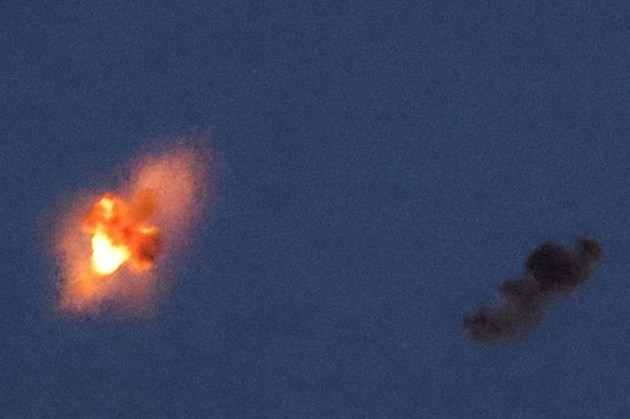Israel-Hezbollah escalation: Nearly 500 killed in Lebanon as airstrikes intensify
Israel’s defense system swiftly responded to Hezbollah’s rocket and drone strikes on Monday, following Israeli airstrikes targeting Hezbollah positions in Lebanon. (Reuters photo)
September 24, 2024 06:18 IST 1 / 10
1 / 10Israel’s defense system swiftly responded to Hezbollah’s rocket and drone strikes on Monday, following Israeli airstrikes targeting Hezbollah positions in Lebanon. (Reuters photo)
 2 / 10
2 / 10According to Lebanon's health ministry, 492 people, including 35 children, were killed in the strikes, making it the deadliest cross-border escalation since the Israel-Hamas war erupted on October 7, 2023. (Reuters photo)
 3 / 10
3 / 10Hezbollah launched rockets and drones into northern Israel, triggering air raid sirens in cities like Haifa and Carmel. The Israeli military warned citizens to brace for more incoming attacks. (AP photo)
 4 / 10
4 / 10Over 300 Hezbollah targets were hit by Israeli airstrikes in retaliation, according to the Israel Defense Forces (IDF). (AP photo)
 5 / 10
5 / 10Israeli military chief Lt. Gen. Herzi Halevi was pictured in military headquarters in Tel Aviv, approving further strikes as the conflict continued to escalate. (AP photo)
 6 / 10
6 / 10Despite the intensifying violence, neither side has officially declared it a full-scale war. Israeli officials maintain they are not seeking war with Hezbollah, emphasizing that military action can be avoided if Hezbollah halts its attacks. However, Hezbollah has stated it will continue its strikes in support of Hamas until a ceasefire in Gaza is reached. (Reuters photo)
 7 / 10
7 / 10Hezbollah fired around 150 rockets into northern Israel, targeting multiple military bases and infrastructure. Israel responded by launching airstrikes across southern Lebanon. (AP photo)
 8 / 10
8 / 10The militant group’s leader, Hassan Nasrallah, vowed to keep up daily strikes against Israel in retaliation for Israeli attacks on Lebanese villages. (AP photo)
 9 / 10
9 / 10Meanwhile, fighting in Gaza has slowed, but the death toll continues to rise. (Reuters photo)
 10 / 10
10 / 10Since October 7, over 41,000 Palestinians have been killed in Gaza, with Israel claiming to have killed 17,000 militants. (AP photo)











